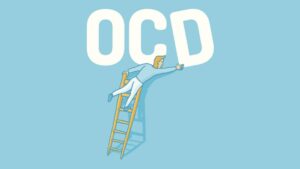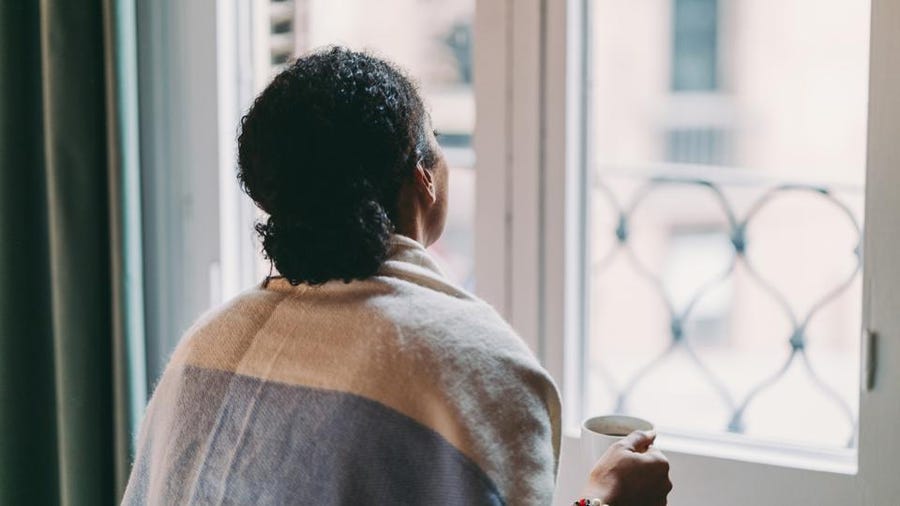Obsessive-compulsive disorder (OCD) is a type of anxiety disorder that can cause a person to have recurring, unwelcome thoughts and behaviors that are difficult to control. Traditional treatments for OCD include medication, talk therapy, and cognitive behavior therapy. But even with these treatments, many people still struggle with their symptoms. That’s why many mental health professionals are turning to light therapy as an alternative treatment for OCD. In this blog post, we’ll take a look at what light therapy is and how it can help people with OCD manage their symptoms. We’ll also discuss the potential risks and benefits of this form of treatment so you can make an informed decision about whether light therapy is right for you or your loved one.
Contents
What is OCD?

Obsessive-Compulsive Disorder, or OCD, is a mental health disorder that affects millions of people around the world. People with OCD experience intrusive, unwanted thoughts (obsessions) and engage in repetitive behaviors (compulsions) to try to mitigate their anxiety. Common obsessions include fear of contamination, need for symmetry or exactness, and unwanted sexual or violent thoughts. Common compulsions include excessive hand-washing or cleaning, repeated checking of things like doors or appliances, and counting or ordering objects in a specific way.
Several different things can cause OCD, and it is often a combination of factors. These can include genetics, brain chemistry, and life experiences. For example, if you have a close relative with OCD, you are more likely to develop the condition yourself. If you have experienced trauma or abuse, this can also increase your risk.
OCD can be a debilitating disorder that interferes with daily activities and relationships. However, there are treatments available that can help people manage their OCD symptoms. One such treatment is light therapy.
What is Light Therapy?
Light therapy is a treatment that involves exposing the eyes to intense levels of light. The therapy is also known as phototherapy. Light therapy is most commonly used to treat the seasonal affective disorder (SAD), but it can also be effective in treating other conditions such as depression, sleep disorders, and certain types of anxiety.
During light therapy, a person sits or stands in front of a light box that emits bright light. The light box is usually positioned about 12 to 24 inches away from the person’s face. The therapist may also ask the person to wear goggles that block out all wavelengths of light except for the therapeutic one.
A typical light therapy session lasts for 30 minutes to two hours. The length and frequency of sessions vary depending on the condition being treated. For example, people with SAD may need to undergo daily sessions during the fall and winter months when there is less natural sunlight.
Most people tolerate light therapy well, but some may experience side effects such as eye strain, headaches, or nausea. These side effects are usually mild and temporary.
How Does Light Therapy Work for OCD?

Light therapy is a type of treatment that uses exposure to artificial light to help relieve symptoms of OCD. The theory behind how light therapy works for OCD is that exposure to light can help to regulate the body’s natural sleep cycle and circadian rhythm. This in turn can help to improve mood and reduce anxiety levels. Several studies have shown that light therapy can be an effective treatment for OCD, with one study showing that it was as effective as medication in reducing OCD symptoms.
The working of light therapy for OCD involves a combination of light exposure and cognitive behavior therapy (CBT). During a typical session, the patient is exposed to bright artificial light while engaging in CBT exercises. The goal of this combined treatment is to help the patient learn to manage their symptoms more effectively.
Light therapy may be administered in either a clinical setting, where a therapist is present to guide the patient through the exercises, or in a home setting using light boxes designed specifically for this purpose. The light used must be appropriately bright and calibrated to provide the correct therapeutic dose. Depending on individual needs, treatment sessions may occur anywhere between once every few days to several times daily.
How to Find a Light Therapy Practitioner?
If you are considering light therapy for OCD, it is important to find a practitioner who is experienced and qualified to provide this treatment. Here are some tips on how to find a light therapy practitioner:
1. Ask your regular doctor or mental health professional for a referral. They may know of someone who specializes in light therapy for OCD.
2. Search online for practitioners in your area. Look for someone who has experience treating OCD with light therapy.
3. Once you have found a few potential practitioners, call them and ask about their qualifications and experience treating OCD with light therapy. Be sure to also ask about pricing and whether they accept your insurance.
4. Schedule an initial consultation with the practitioner to see if they are a good fit for you and your needs. During the consultation, be sure to ask any questions you have about the treatment and their experience providing it.
Why Do People Use Light Therapy For OCD?

There are many different treatments for OCD, and light therapy is gaining popularity. There is some evidence to suggest that this therapy can be effective in treating the symptoms of OCD.
Light therapy involves exposure to bright light. This can be done using a special lamp or by spending time outdoors in the sun. The idea behind light therapy is that it can help to regulate brain chemistry and reduce the symptoms of OCD.
There are several different ways that people use light therapy to treat their OCD. Some people use it as a standalone treatment, while others may use it in conjunction with other treatments such as medication or cognitive behavioral therapy.
If you are considering using light therapy for your OCD, it is important to speak to a mental health professional first. They will be able to help you decide if this treatment is right for you and advise you on how to best use it. The mental health professional may also be able to refer you to a qualified light therapy practitioner.
Light therapy can be an effective treatment for OCD when used correctly and in combination with other treatments. While it is not a cure, light therapy may help reduce symptoms associated with OCD and improve the overall quality of life. It is important to speak to your healthcare provider if you are considering light therapy as a treatment option. With their help, you can find the best light therapy practitioner for your needs and work together to create a comprehensive plan of treatment that is right for you.
Cons of Light Therapy
Some of the potential downsides of light therapy include:
Risk of headaches and eyestrain from exposure to bright lights
One of the main risks associated with light therapy is that individuals may experience headaches or eyestrain. This can occur if the intensity of the light used in treatment is too high, and/or if an individual does not take enough breaks from exposure to the light.
Potential disruption of sleep patterns
Light therapy has been known to disrupt people’s circadian rhythms or sleep-wake cycles. This is because bright lights can interfere with an individual’s natural production of melatonin, a hormone that regulates our sleep-wake cycle.
Risk of skin irritation
In some cases, light therapy can cause mild to moderate skin irritation or a burning sensation. In addition, people who have lupus and/or are photosensitive may be more prone to experiencing adverse reactions from light therapy. It’s important to talk to your doctor before starting any course of treatment involving light therapy if you are one of these individuals.
Cost
Another potential downside of light therapy is its cost. Depending on the type of equipment used, treatment can range from expensive to very costly. Additionally, insurance may not cover the cost of light therapy.
Time commitment
Light therapy typically requires a significant time commitment and can take up to 30 minutes per session, several times a week. This can be difficult for individuals who have busy schedules or difficulty carving out time in their day.
Conclusion
Light therapy for OCD can be highly beneficial for those who are struggling with symptoms of this disorder. Not only is it a safe and non-invasive form of treatment, but it has been shown to have positive results in many people who suffer from obsessive-compulsive disorder. It is important to always consult your doctor before trying any new type of therapy to ensure that you are getting the best treatment plan possible for your particular situation. With light therapy, you may find relief from the intrusive thoughts and compulsive behaviors that characterize OCD so that you can live a more balanced life.
For more information and guidance, please contact OCDMantra. OCD is a mental health disorder characterized by obsessions and compulsions. If you have any queries regarding OCD treatment, experienced ERP therapy therapists at OCDMantra can help: Book a trial OD therapy session.


